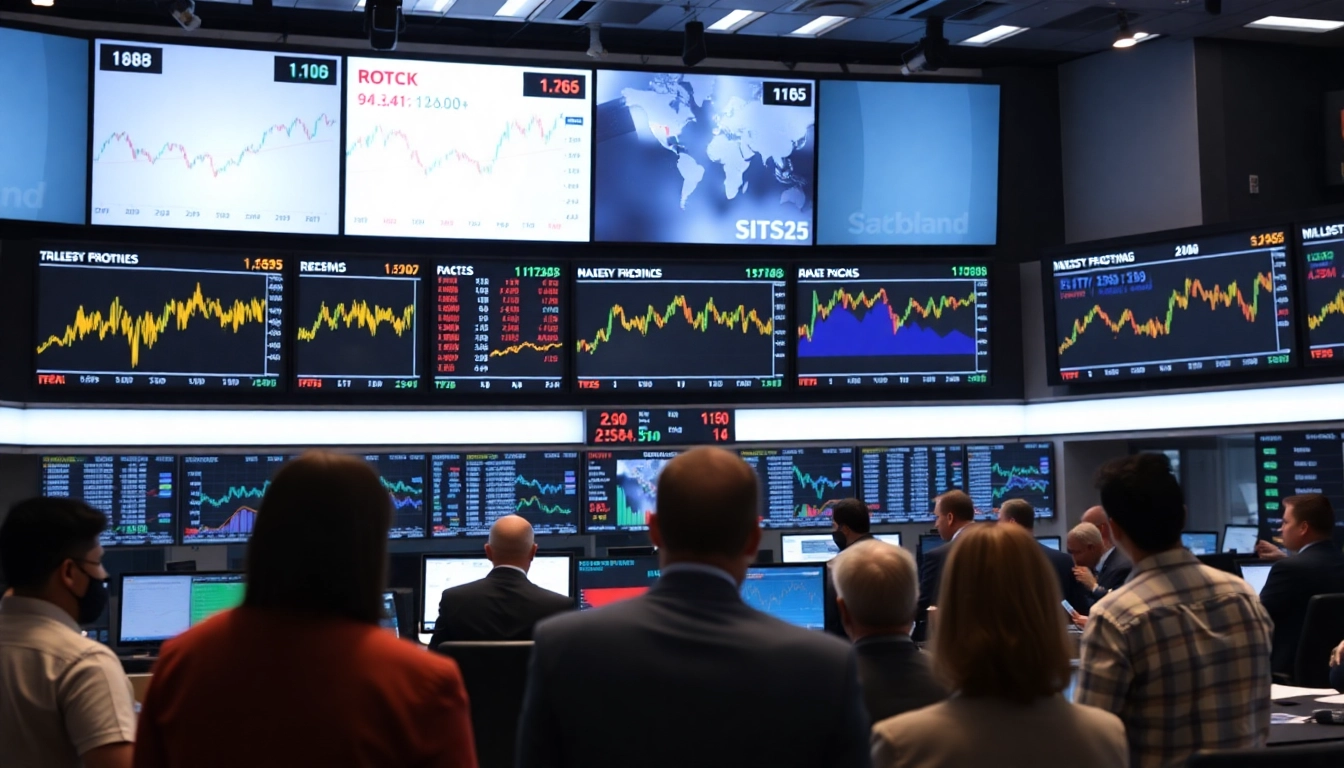Understanding Cryptocurrency Futures Trading: Basics and Significance
What Are Cryptocurrency Futures?
Cryptocurrency futures are standardized contracts that obligate the buyer to purchase, or the seller to sell, a specified amount of a digital asset at a predetermined price on a future date. Unlike spot trading, which involves immediate exchange of assets, futures enable traders to speculate on the future price movements of cryptocurrencies without owning the underlying asset outright. This mechanism originated from traditional financial markets but has rapidly gained prominence within the crypto space, providing new avenues for hedging, leverage, and profit maximization.
The primary appeal of crypto futures lies in their ability to magnify potential gains through leverage. However, this also amplifies potential losses, making risk management essential. Moreover, futures markets contribute significantly to liquidity and price discovery, offering a more transparent valuation of digital assets.
How Futures Trading Works in the Crypto Market
Crypto futures are traded on specialized platforms or exchanges like Binance, CME, and BitMEX, which provide contracts linked to cryptocurrencies such as Bitcoin, Ethereum, and others. Traders can take long positions, betting that the price will rise, or short positions, betting on a decline.
These contracts involve an initial margin (a fraction of the total contract value) and maintenance margin requirements, compelling traders to monitor price movements vigilantly. Settlement can be cash-based or involve actual delivery of the asset, depending on the contract specifications.
For example, a trader anticipating Bitcoin’s price increase might buy a futures contract at a specific price. If the price rises, the trader profits from the difference, multiplied by leverage, but if the market moves against the position, losses can exceed initial investments unless properly hedged.
Importance of Futures for Cryptocurrency Investors
Futures trading plays a crucial role in shaping the ecosystem for both retail and institutional investors. It offers a tool to hedge risk—protecting portfolios from adverse market movements—and facilitates price discovery in volatile markets. Additionally, futures enable sophisticated strategies like arbitrage and arbitrage-like spreads, which can enhance profitability.
Furthermore, futures attract more liquidity, reducing volatility for underlying assets and fostering a more mature market environment. For investors, understanding futures contracts is vital as it informs risk assessment and strategic planning, especially amid unpredictable market swings.
Case Study: Binance’s Outage and Its Impact on Market Dynamics
The Details of Binance’s Recent Trading Outage
Binance, one of the world’s leading crypto exchanges, recently experienced a significant outage that temporarily halted futures trading. Reported as a technical glitch stemming from server overloads and potential system vulnerabilities, the outage lasted several hours, causing concern among traders and investors globally.
During this period, market data showed sharp declines in liquidity, with many traders unable to execute orders or implement hedging strategies. Such outages can have ripple effects, influencing not only Binance users but also the broader market, given Binance’s market share.
Market Reactions and Investor Responses
The outage triggered panic among traders, particularly those employing leverage in futures markets. Some viewed the incident as a risk to market stability, prompting a temporary flight to safer assets like stablecoins or fiat reserves. Others took the opportunity to reassess their risk management practices, emphasizing the importance of infrastructure resilience.
In some cases, a surge in trading volume on alternative exchanges occurred as traders sought to mitigate the impact of Binance’s downtime. This scenario underscored the critical importance of diversification and monitoring cross-exchange liquidity.
What Resuming Trading Means for Crypto Liquidity and Confidence
The resumption of futures trading on Binance is a pivotal event, signaling restoration of market confidence and operational stability. It reassures investors of Binance’s commitment to robust infrastructure and continuous service, which is vital for the healthy development of crypto markets.
Moreover, the recovery of liquidity levels post-outage helps stabilize prices and prevent abrupt market disruptions. Institutional traders seek assurance that exchanges can handle high-volume trading without interruptions, which directly influences their willingness to participate actively.
Glitch or Strategic Move? Analyzing Binance’s Trading Suspension and Resume
Examining Potential Technical Glitches
Exchanges like Binance are complex systems susceptible to technical issues, especially during periods of high volatility and volume. The recent outage is likely a reflection of system overloads or software bugs—common in rapidly evolving platforms that handle millions of transactions daily. Such glitches, while disruptive, often serve as catalysts for technical upgrades, enhancing future stability and scalability.
Crypto exchanges invest heavily in infrastructure resilience, but the decentralized and distributed nature of blockchain systems can still pose challenges. Preventative measures include stress testing, load balancing, and redundancy planning to mitigate future risks.
Smart Market Moves and Communication Strategies
Binance’s quick communication about the outage and its subsequent actions demonstrated strategic transparency. Market leaders tend to leverage outages to demonstrate proactive risk management and reinforce customer trust. By providing timely updates, publicly addressing the issue, and outlining plans for improvement, Binance aimed to minimize long-term reputational damage.
Additionally, some experts argue that planned outages can be used to implement system upgrades, address security vulnerabilities, or optimize performance—thus turning what appears as a glitch into a strategic move aimed at long-term resilience.
Implications for Future Cryptocurrency Market Stability
While outages are disruptive, they highlight areas for systemic improvement across the industry. Exchanges enhancing reliability and increasing transparency can boost confidence, which is fundamental for widespread adoption and institutional participation.
A transparent framework for managing outages, coupled with robust security protocols, can promote a more stable market environment. As technology advances, ongoing investment in infrastructure and crisis management will be crucial to sustain growth and trust in cryptocurrency trading.
Risk Management and Regulatory Perspectives in Cryptocurrency Futures
Safeguarding Investments in Volatile Crypto Markets
Crypto futures, with their inherent leverage and volatility, necessitate rigorous risk management strategies. Traders should employ stop-loss orders, position sizing, and diversify their portfolio to avoid catastrophic losses. Implementing these practices is essential, especially during market upheavals like outages or sharp price swings.
Platforms increasingly integrate risk mitigation tools, such as auto-liquidation and cooling-off mechanisms, designed to protect traders from unexpected shocks. Educating traders on the risks and best practices remains a cornerstone of a healthy trading ecosystem.
Regulatory Environment Around Crypto Trading Resumption
Regulatory agencies worldwide closely monitor crypto exchanges’ stability and operational transparency, especially during incidents like outages. Many regulators are advocating for stricter compliance measures, including higher security standards and contingency planning, to safeguard investors.
Binance’s swift restoration and transparent communication about the outage may exemplify proactive compliance, aligning with emerging regulatory frameworks aimed at promoting market integrity and investor protection.
Best Practices for Traders During Market Fluctuations
During market disruptions, traders should prioritize safety and strategic patience. Key practices include avoiding panic selling, continuously monitoring exchange notifications, and reassessing leverage levels. Keeping funds in secure wallets and employing hardware wallets or cold storage are recommended for long-term holdings.
Additionally, staying informed through credible sources, such as Altcoin Desk, provides timely insights into market developments, helping traders make informed decisions amidst volatility.
Future Outlook: Trends and Predictions for Cryptocurrency Futures
Emerging Trends in Crypto Futures Trading
The landscape of crypto futures is evolving rapidly. Innovations such as decentralized futures platforms, AI-powered trading algorithms, and on-chain risk management tools are shaping future trading paradigms. Additionally, increasing integration with traditional finance institutions signals a shift towards mainstream acceptance.
The rise of options and more complex derivative products within crypto signifies an expanding market aimed at sophisticated investors seeking tailored risk exposures.
Technological Innovations and Platform Security
Enhanced security protocols, including multi-signature wallets, hardware security modules, and advanced encryption, are becoming industry standards. Blockchain scalability solutions and integration of artificial intelligence for anomaly detection are also advancing.
As technology improves, exchanges will focus on minimizing outages and safeguarding user data, thereby bolstering overall market stability.
How Traders Can Prepare for Market Shifts
To adapt to the rapidly changing crypto futures environment, traders should develop comprehensive trading plans, utilize automated risk management tools, and remain vigilant about technological updates from exchanges. Keeping abreast of geopolitical developments, regulatory changes, and technological trends will enable proactive decision-making.
Building a resilient portfolio that accommodates volatility and uncertainties is crucial—diversification across different assets, strategies, and platforms mitigates risks associated with outages or sudden market moves.














